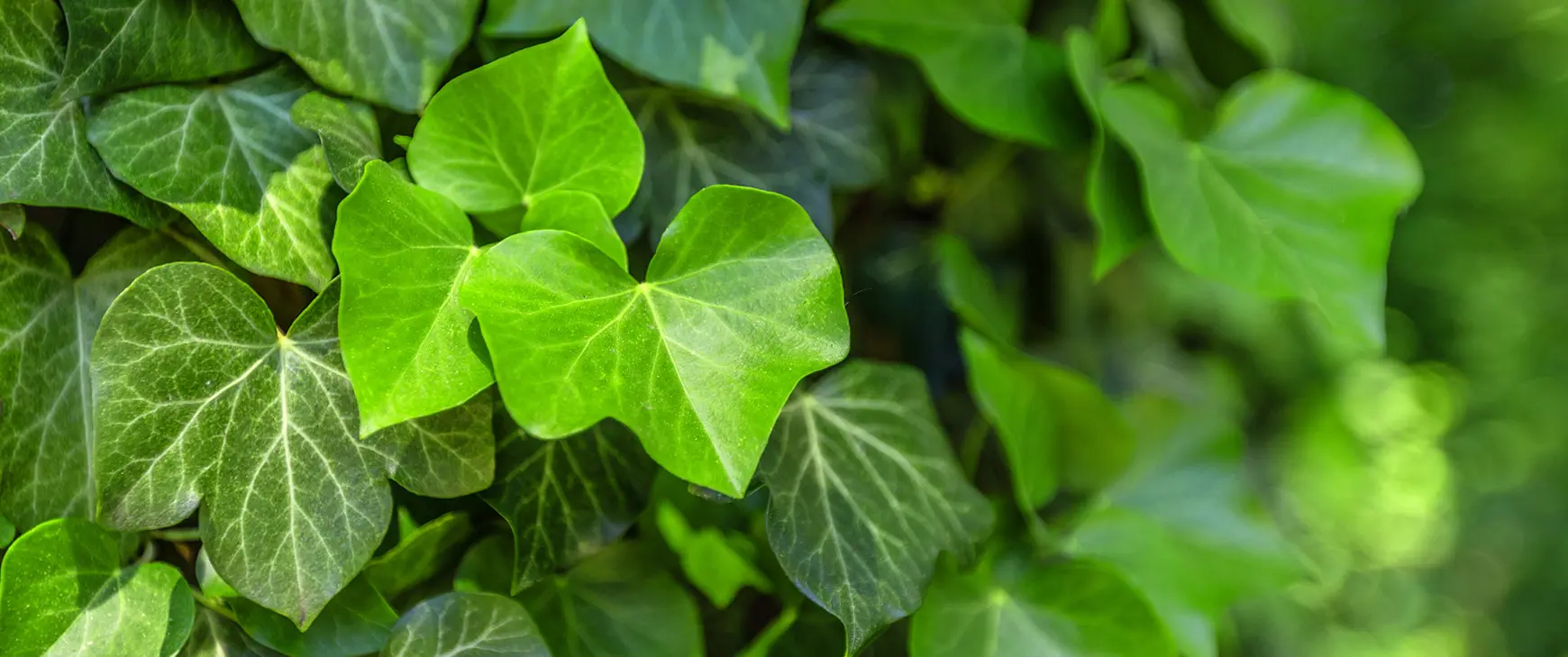
Ivy (Hedera helix)
Ivy is one of the most common native plants in Switzerland. We often see it in gardens, in the wild or in pots. But it also has a healing effect on phlegmy coughs.
Everyone will recognise ivy (Hedera helix L.). In the wild, in the city, perhaps in the garden or walking through the forest. This evergreen vine climbs its way effortlessly up walls and trees. But not many people know that it is a medicinal plant as well. An extract from the leaves of the ivy is an effective remedy for coughs. Ivy extract has a particularly soothing effect on phlegmy coughs. Read on to find out more about ivy, its use and its effects.
Occurrence and distribution of ivy
The common ivy plant (Hedera helix L.) is a native species in Switzerland. It is by far the most common of the Hedera species. Hedera helix often grows up walls, trees or fences in gardens as well as in the wild. It is commonly used to add greenery to facades. Ivy plants prefer semi-shady places. They do not grow well in excessive water or waterlogged soil, or during prolonged periods of dryness. As a potted plant, ivy also prefers semi-shady locations and a moderate amount of water.
Hedera helix is found all across Europe, with its habitat spanning all the way north to Sweden and south to Turkey. The vine is found mainly in forests, in stone quarries and on ruins. Today, this unassuming plant has even spread to areas of the world where it is not native. In these regions, including New Zealand, Australia and Canada, it is sometimes fought off as an invasive species.
Appearance of ivy
Common ivy is unmistakable. its leaves are green all year long, and it typically grows in the form of a climbing vine. Although it sometimes covers the ground, it has roots that allow it to climb as high as 20 meters up anything it comes into contact with, including trees, fences and house walls.
The original shoot becomes wooden after several years. The leaves in the upper regions of the plant then begin to grow in an egg-like shape instead of their previous lobed shape. Ivy develops this “adult” form after seven to eight years. While most native plants bloom in the spring or summer, the inconspicuous, greenish ivy flowers make their first appearance in autumn, from September to October. Thus, the ivy plant is an important food source for bees and other insects at a time when nectar is otherwise scarce. The bluish-black berries develop the following year. They are toxic to humans but can be eaten by many birds.
History and tradition of ivy
Ivy plants can live for up to 450 years. In addition, ivy vines become firmly and permanently rooted in their soil, which is why they used to be a symbol of eternal life and loyalty. The growth of ivy was thought to be a sign of God’s presence. Marrying couples were given wreaths of ivy as a symbol of eternal love and fidelity.
The German name for the plant (Efeu) apparently goes back to the old Saxon word, which basically translates to “climber”. The scientific name, Hedera, is derived from the Greek word hedra, meaning “seat”, because the plant “sits” on trees. Helix describes the spiralling of the plant as it winds its way up trees.
Ingredients and effects of ivy leaves
The leaves of the ivy plant have medicinal uses. The triterpene saponins, such as hederacoside and alpha hederin, are mainly responsible for the medicinal effect. The leaves also contain smaller quantities of flavonoids, essential oils and phenol carboxylic acids.
Ivy extracts stimulate the bronchial mucus membranes to produce thinner phlegm. As a result, the plant extracts help to release phlegm and make it easier to cough it up. If you have bronchitis, your respiratory tract (bronchi) is often constricted. Ivy preparations also have a soothing, relaxing effect on the muscles in the respiratory tract.
Ivy as a medicinal product
Ivy leaves are used as an expectorant (i.e. help to bring up mucus from the lungs) to alleviate a cough. But people should not pick and consume the leaves themselves. If it is taken in the wrong dose and prepared incorrectly or if they are allergic to it, some people may not be able to tolerate it. The dry extract with ivy is extracted using a special method to create a standardised, safe and well-tolerated medicinal product with the same quantity of the active ingredient.
Preparations with ivy extract dislodge thick phlegm, relax the bronchi and make it easier to clear the lungs. In this way, they assist in alleviating chesty coughs and improving breathing. This often prevents phlegmy coughs from lasting too long and causing longer bouts of bronchitis.
This is general information. For individual advice, please contact a specialist.
Modern herbal medicine
Modern herbal medicine (phytotherapy) combines centuries-old knowledge with the latest scientific findings.
Details
